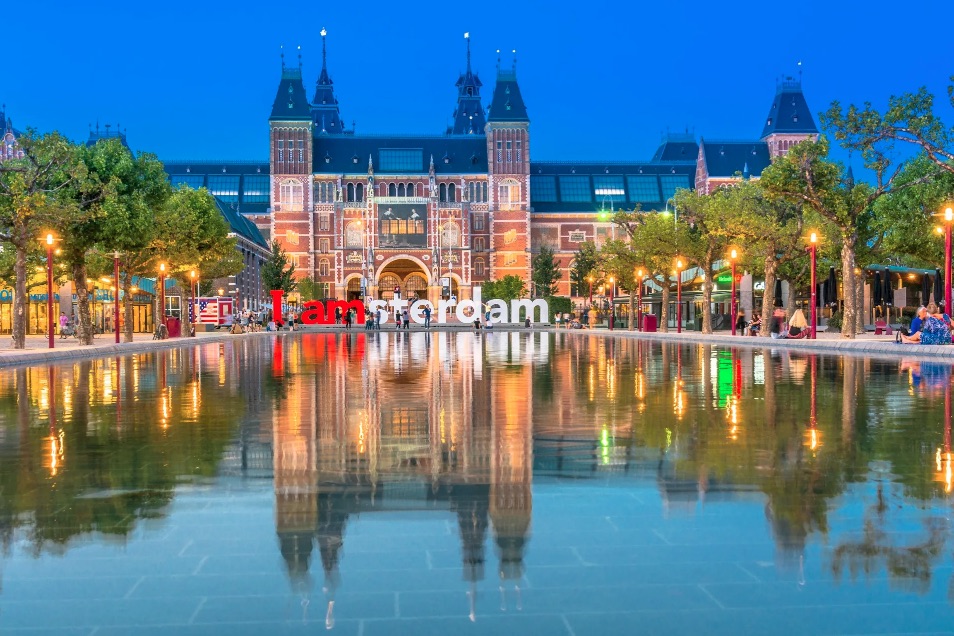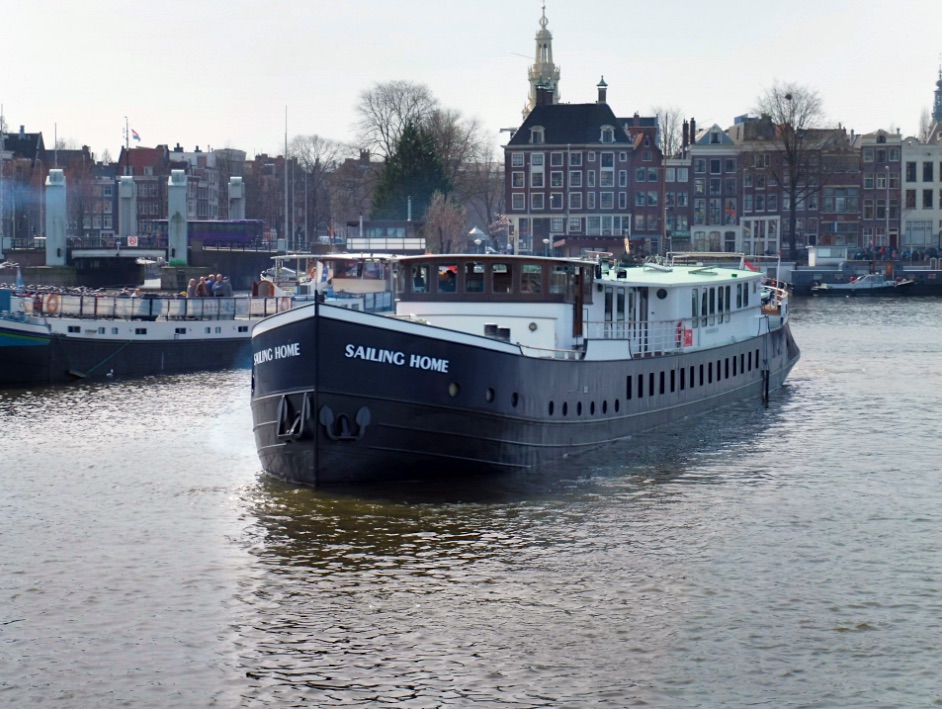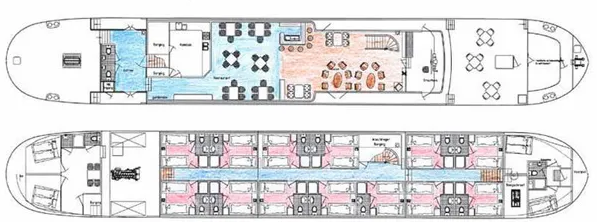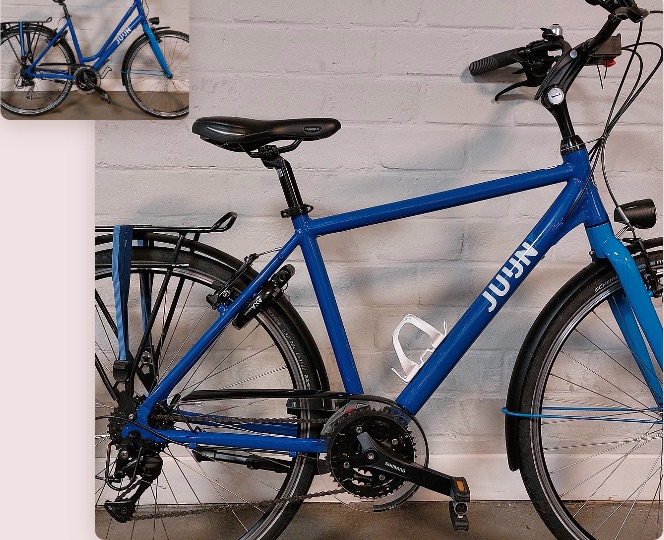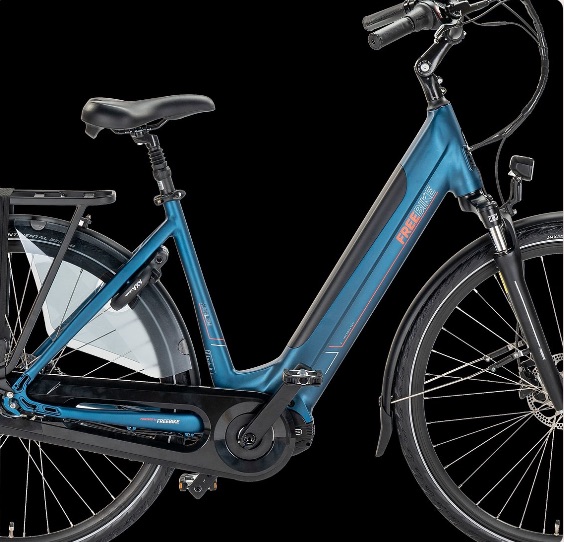Day 1 Thursday: Amsterdam - Oude Wetering ca. 15 km | 9 ml
Boarding time is between 12:30 PM and 1:30 PM. The barge needs to leave the mooring place in Amsterdam at 2 PM. It is very important you are on time. The barge can’t wait due the opening hours of bridges and/or locks. When you arrive on board the ship, you can put your luggage away in your cabin and then enjoy a cup of coffee or tea. It is also a good moment to become acquainted with the guide, skipper and crew and of course your fellow passengers. We sail to Oude Wetering where the guide will take you on a short ride to get used to your bikes.
Day 2 Friday: Oude Wetering - Gouda ca. 45 km | 27 ml
From Oude Wetering you will continue your tour over country roads along river banks and channels through the Green Heart to the city known for its cheese: Gouda. Who thinks of Gouda, not only thinks of cheese, pipes, ‘stroopwafels’ (treacle-waffle) and pottery, but also of stained-glass windows, a fairy-like town hall and atmospheric canals. Gouda is a beautiful Old-Dutch city with a mostly intact city centre. As on most days, after dinner you can take a walk through the city.
Day 3 Saturday: Gouda - Dordrecht ca. 40 km | 25 ml
Today you will cycle along the Dutch IJssel, through the deepest lying polder of the Netherlands Krimpenerwaard and over narrow cycling paths to the river ‘Lek’. Here you will cross the river by ferry to Kinderdijk. From the embankments of the river Lek, you will witness an amazing view of the 19 windmills, which are now listed as a UNESCO’s World Heritage site. This is where you will take a break and visit the interior of a windmill. After a beautiful tour through the Alblasserwaardpolder you will take a fast ferry to the old town of Dordrecht, birthplace of independance of the Netherlands.
Day 4 Sunday: Dordrecht - Zierikzee ca. 54 km | 34 ml
From Dordrecht we will sail to the Delta area of the Dutch greater rivers during breakfast. Years ago, an open connection existed with the sea due to the many tributaries in this area. After the disastrous flooding in 1953, the Deltaplan was developed and most tidal outlets were closed from the sea by dams. Most parts of Zeeland were, and still are, under sea level and in 1953 the embankments were too weak and too low, causing this area to be at risk for flooding’s once in every 80 years. Now, because of the flood barriers, that chance is reduced to less than once every 4000 years. Just before reaching our destination of today (Zierikzee, on the island of Schouwen-Duivenland) we will visit the ‘Watersnoodmuseum’. This museum tells the tragic events of 1953 and is built in recently renewed caissons, once used for the last closure gap. This was done in November 1953, ten months after the storm surge which broke through more than 300 embankments. Zierikzee is a beautiful town and the centre of the ‘mussel culture’. The ‘Zeeuwse mosselen’ (blue mussels) are a renowned delicacy.
Day 5 Monday: Zierikzee - Middelburg ca. 51 km | 32 ml
This morning you cycle along the Oosterschelde towards the North Sea, to cross the Oosterscheldedam. The enormous locks are built in this embankment and can be closed during storms and high tides protecting the south-west of the Netherlands against the sea. This embankment was one of the last in a series of barriers against the sea. When cycling along the embankment, one will realize why this has been one of the most difficult and costly challenges to protect the country now and in the future and to let seawater into the widespread Delta area. It is precisely why the Deltaworks are referred to as the one of the Seven Wonders of the Modern World by the American Society of Civil Engineers. After this dam you will peddle to Middelburg, but not without visiting the picturesque port town of Veere. Middelburg is the lively principal town of Zeeland with many old houses, churches, the beautiful town hall and a pleasant shopping. Also to be found in Middelburg is the Roosevelt Academy, a liberal arts college, located in the former late-gothic town hall on the market of Middelburg.
Day 6 Tuesday: Middelburg - Ghent ca. 45 km | 27 ml
Today you have to cross the ‘Westerschelde’, the only estuary which isn’t closed by a dam because it is the gateway to the port of Antwerp. A short ferry trip brings you from Vlissingen to Breskens in Zeeuws-Vlaanderen (Dutch-Flanders)! We are getting close to Belgium. On your daily cycle route you will cross the Dutch – Belgium border back and forth before you definitely cross the Dutch – Belgium border by boat to sail to Ghent.
Day 7 Wednesday: Ghent-Bruges ca. 45 km | 27 ml
This morning you will cycle through Ghent to the scenic countryside of Oost-Vlaanderen (East-Flanders). Characteristic for this area are the woods, fields, small villages and castles. From the Aalterbrug (also for the shorter route) the last part of this route takes us over the former tow path along the canal of Oostende-Gent, the oldest canal of Belgium, to Bruges. The impressive city of Bruges is the end destination of this bike and barge trip. This evening you can enjoy the medieval city of Bruges and many of you are likely to stay another day in this beautiful city.
Day 8 Thursday: Bruges
The tours is officially over after breakfast before 10 AM. End of the tour after breakfast, before 10 AM. If you have an early flight you can ask the the tour guide to arrange a taxi to the airport.
All distances are approximate. Due to circumstances beyond control, weather conditions or provisions issued by local authorities, the itinerary may be subject to some changes before and/or during your holiday.
